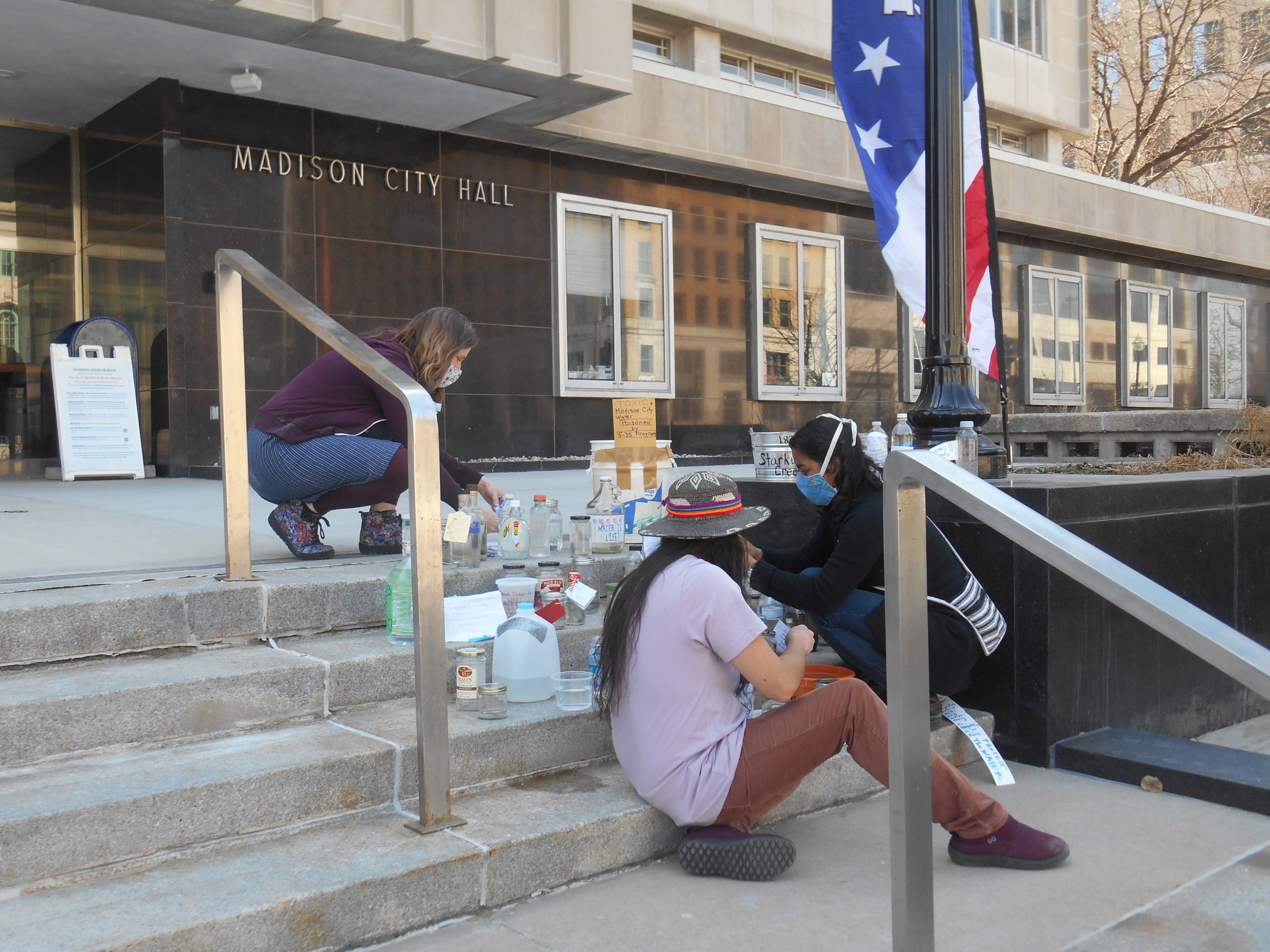Eken Park Resistance leaders and community members put jars of local waters in front of the City-County Building at the Water is Life event, April 2021
On May 23, Chris Hubbuch reported on Madison Mayor Rhodes-Conway’s response to the Sustainable Madison Committee’s April 27 recommendations for city actions to address Truax Field’s PFAS problems.
Hubbuch’s article did a great job capturing key points in the Mayor’s response–the good, bad, and ugly.
But having driven Madison’s PFAS advocacy since 2018–and having experienced during these years the city’s and Public Health Madison Dane County’s responses to us, other residents, and the PFAS mess–we have many comments about details in the letter.
To start, on the Mayor’s rejection of SMC’s recommendation to revive the PFAS Task Force…
The Mayor said she didn’t know why the PFAS Task Force didn’t happen. Really? Here’s how the PFAS Task Force was born and died. Much of this was in the Wisconsin State Journal and The Cap Times. While running for mayor, Rhodes-Conway told us she would support the creation of the PFAS Task Force, but its demise later played out in meetings she participated in.
The Mayor’s proposed communication strategies are a step forward, and if they happen they will provide some venues for public engagement on PFAS (and there are few or none now). That said, what she proposed will not (and cannot) remotely do what the PFAS Task Force was intended to do. We first proposed the PFAS Task Force back in early 2019, worked with Alders Ahrens and Rummel to draft many versions of the legislation to create it, and nurtured it through several city committees (all of them unanimously approved it). So we know what its intent was, who was included in it and why, and what led to its sad fate in the city legislation dustbin.
It would be too much to re-visit all that history now–and at this point it’s “water under the bridge,” as the saying goes. The sad reality (of course never openly admitted by the powers-that-be) is that the PFAS Task Force died because city leaders and staff don’t want to give community members any real voice and power–places at the table–in decisionmaking about PFAS problems here, even though they will impact their health for generations. The city also clearly wants to keep important decisions it is making with other key actors in the Truax Field PFAS mess–the county, DNR, Air National Guard–behind closed doors. Even city alders and county supervisors aren’t allowed to participate in the non-public Truax-PFAS meetings among these entities over the last couple of years, and there are no public records of what was discussed or decided at them.
The community meetings the Mayor proposed have some value, but we know from decades of experience that they will be mostly one-way dog and pony shows where city and PHMDC staff will tout all the great things they are doing to address PFAS problems and will downplay (or dismiss) residents’ concerns. This city-led PR meeting approach will also serve to protect other entities responsible for the PFAS debacle (county, airport, MMSD, Air National Guard) from engagement with and accountability to the community on what they are doing or not doing about PFAS.
Again, this approach is nothing like the intent of the PFAS Task Force we initiated in early 2019.
Finally, as for the “health impact assessments” the mayor said have been done by the State Department of Health Services, we have no clue what she’s talking about. As far as we know, no health impact assessments have been done by any entity to assess how PFAS exposures have affected people’s health in Madison–especially the most at-risk people in the low-income neighborhoods very near Truax Field, living along Starkweather Creek, and those who eat fish from Starkweather and Lake Monona. That’s what the Sustainable Madison Committee asked for–and the mayor rejected.
Starkweather Creek flooding over a garden in the Darbo Worthington neighborhood


